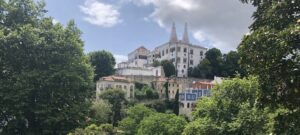Portugal is home to some of the most breathtaking castles and palaces in Europe. These royal residences tell the story of Portugal’s monarchy, its strategic defenses, and its cultural evolution. This article explores the most significant Portuguese castles and palaces, ordered chronologically according to their use by the royal family. Each of these sites reflects the historical and political context in which they were built or occupied.
1. Castelo de São Jorge (St. George’s Castle) – The Birthplace of the Monarchy

- Location: Lisbon
- Period of Use: 12th–15th century
- History: Originally built by the Moors, Castelo de São Jorge was taken by the first Portuguese king, Afonso Henriques, during the Christian reconquest in 1147. It became the main royal residence until the 15th century. Its strategic hilltop position provided a commanding view of the Tagus River, making it an essential military and political stronghold. The castle was gradually abandoned as Portuguese rulers moved to more comfortable palaces.
- Must-See: Walk along the castle walls for panoramic views of Lisbon, visit the archaeological site with remnants from different historical periods, and explore the Tower of Ulysses with its camera obscura offering a unique view of the city.
- Visitor Tips: Wear comfortable shoes as the terrain is uneven. Visit early in the morning to avoid crowds. The sunset views are spectacular from the castle walls. Residents of Lisbon and Lisbon Card holders do not pay entry to the castle.
- Website
- Tickets with the possibility to skip-the-line can be bought here.
Did you know that Ed Sheeran recorded one of his video clips in the castle? See it!
2. Paço da Alcáçova (Royal Palace of the Alcáçova) – The Transition to a Royal Court
- Location: Lisbon
- Period of Use: 13th–16th century
- Why It Was Important: Located within São Jorge Castle, the Royal Palace of the Alcáçova became the center of Portuguese royal administration. It was here that King João I planned Portugal’s maritime expansion. The devastating 1755 earthquake led to its near-total destruction, after which the royal court moved elsewhere.
- Must-See: Although little remains of the original palace, visitors can explore the nearby Santa Cruz do Castelo Church and enjoy breathtaking city views from the castle’s terraces.
- Visitor Tips: Consider hiring a guide to bring the historical ruins to life. The nearby Alfama district is great for a post-visit stroll and traditional Fado music experiences.
3. Palácio Nacional de Sintra – The Summer Retreat of the Monarchs
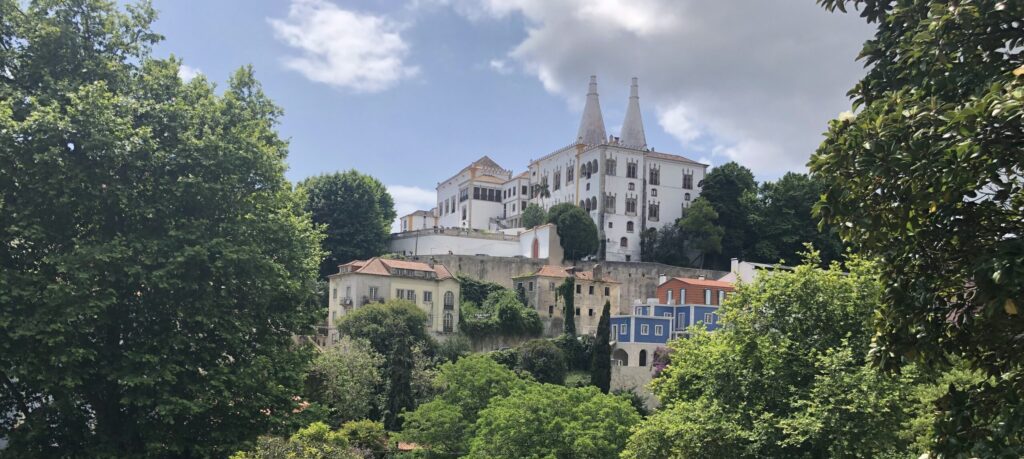
- Location: Sintra
- Period of Use: 14th–19th century
- Why It Was Important: Used extensively by the Portuguese monarchy from the 14th century onwards, the Palácio Nacional de Sintra served as a luxurious summer retreat. The cool mountain climate of Sintra provided relief from Lisbon’s heat, and the palace became a cultural and architectural masterpiece, blending Gothic, Manueline, and Moorish influences. It was also the site of key historical events, such as King Afonso V’s decision to pursue the expansion into Africa.
- Must-See: The iconic twin chimneys of the palace kitchen, the stunning Azulejo tile panels, and the richly decorated Swan Room and Magpie Room.
- Visitor Tips: Sintra can be crowded—arrive early or visit in the off-season for a quieter experience. Consider taking the hop-on-hop-off bus to explore multiple sites in Sintra. If you are with kids, make sure you download an app that allows them to seek hidden treasures. After the visit, they can obtain the souvenir from the shop.
- Website
- Tickets can be bought here.
4. Paço da Ribeira (Ribeira Palace) – The Heart of the Portuguese Empire
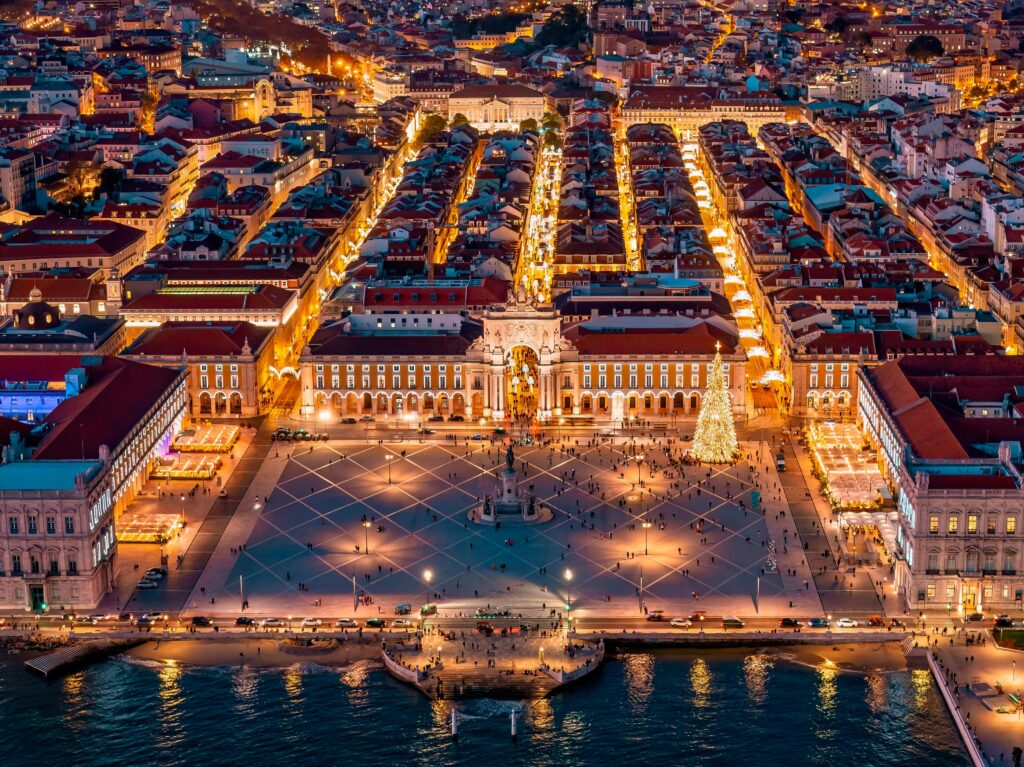
- Location: Lisbon
- Period of Use: 16th–18th century
- Why It Was Important: Built by King Manuel I in the early 16th century, this grand palace became the main residence of the Portuguese monarchy. Situated on the banks of the Tagus River, it symbolized Portugal’s Age of Exploration, with explorers like Vasco da Gama and Ferdinand Magellan frequently visiting. The palace was the center of political power until it was completely destroyed in the 1755 earthquake.
- Must-See: Today, the Praça do Comércio stands where the palace once stood, featuring the grand Arco da Rua Augusta and a statue of King José I.
- Visitor Tips: Enjoy a meal at one of the riverside cafes. Take a guided walking tour to learn about the palace’s history and its impact on Lisbon’s development.
5. Palácio Nacional de Mafra – A Baroque and Neoclassical Masterpiece
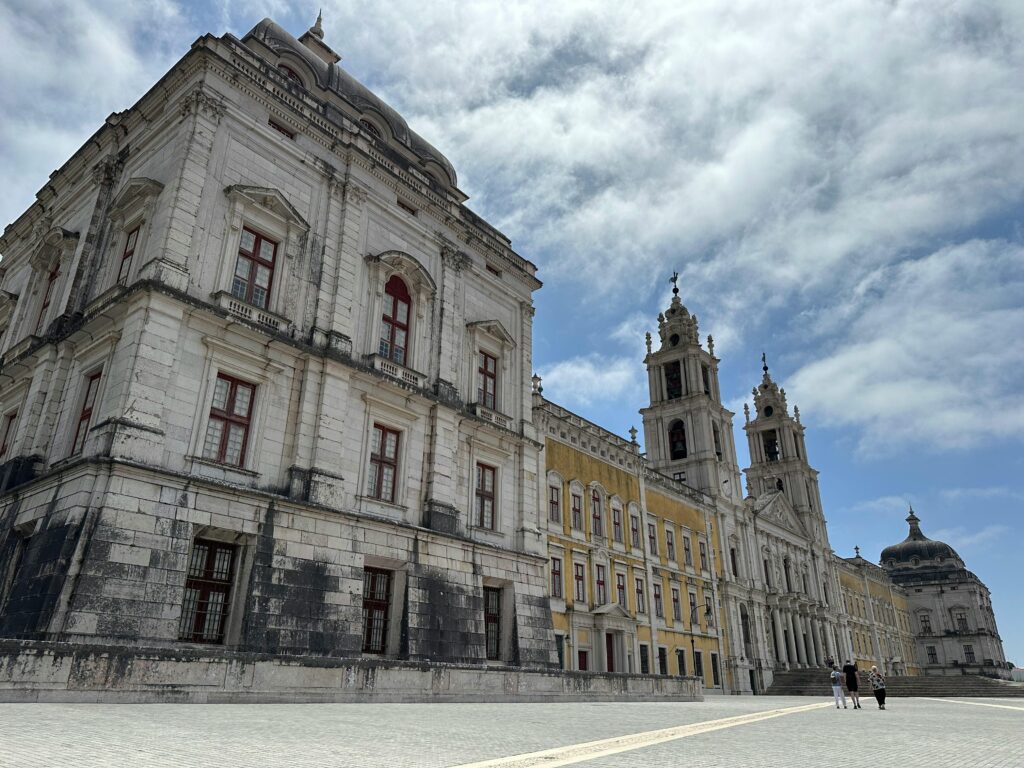

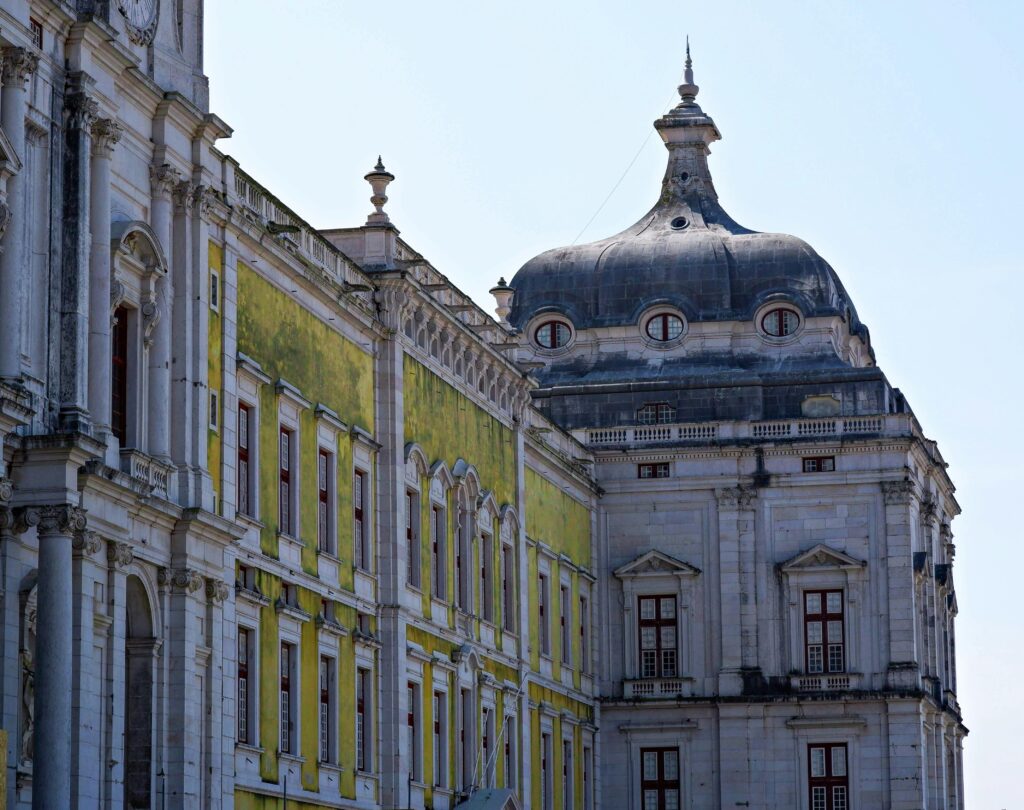
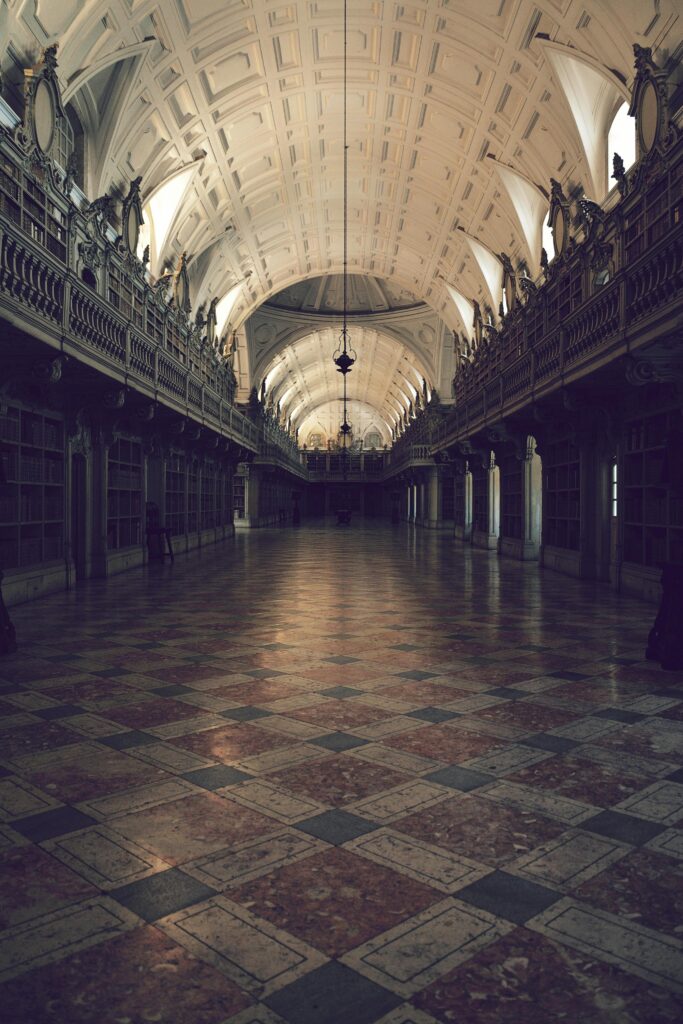
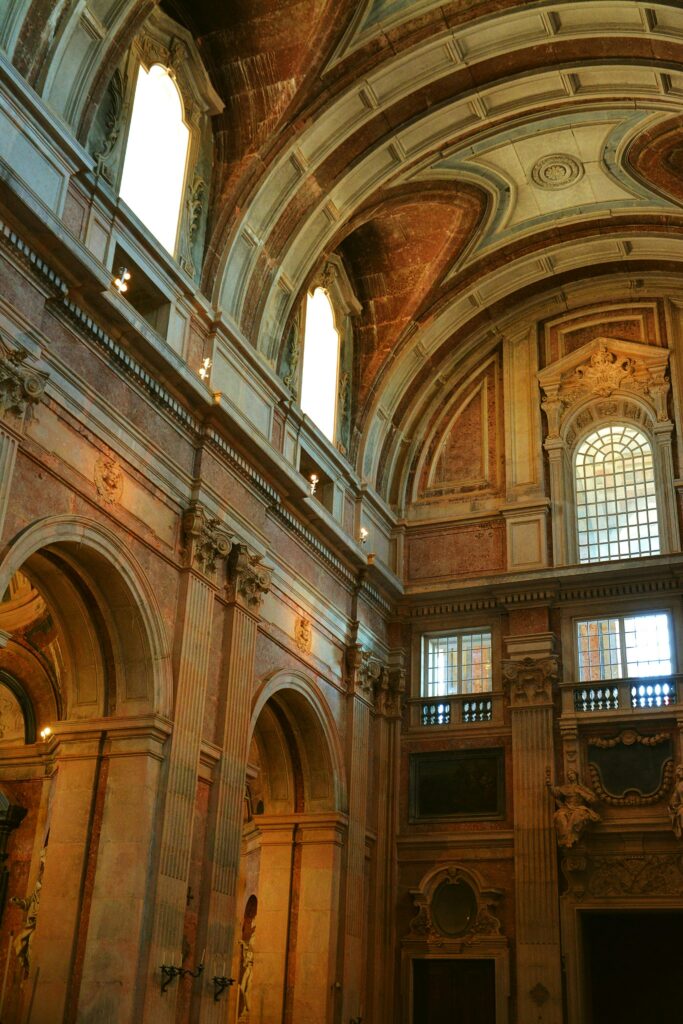
- Location: Mafra
- Period of Use: 18th century
- Why It Was Important: Commissioned by King João V in 1717, Mafra Palace was an extravagant demonstration of Portugal’s wealth, fueled by gold from Brazil. It functioned both as a royal residence and a religious institution, featuring a vast convent and an extraordinary library. However, its remote location made it less practical for governance.
- Must-See: The grand Basilica with its six organs, the stunning library with over 36,000 books, and the unique hidden corridor used by monks for silent movement.
- Visitor Tips: Allocate at least half a day to explore. Don’t miss the library’s bat colony, which helps preserve ancient books by eating insects.
- Website
- You can buy tickets here.
6. Palácio Nacional de Queluz – The Portuguese Versailles
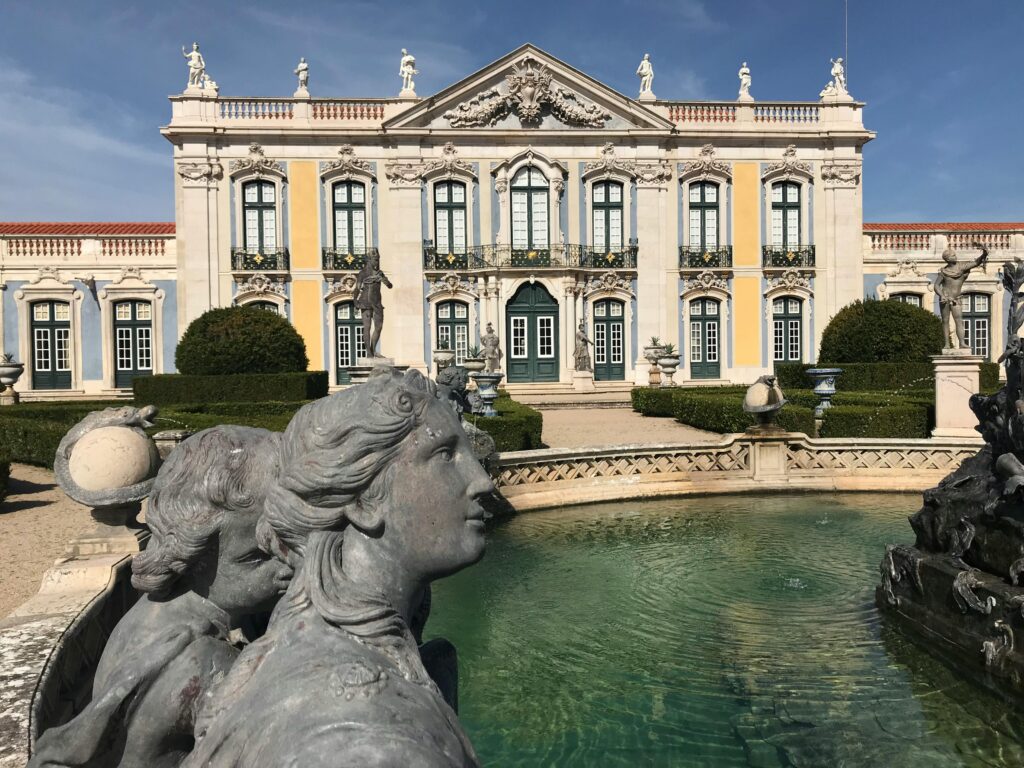
- Location: Queluz
- Period of Use: 18th–19th century
- Why It Was Important: Built as a summer retreat for the Portuguese royal family, Palácio Nacional de Queluz became the official residence of Queen Maria I and later housed Prince Regent João VI. Designed in the Rococo style, it is one of Portugal’s most opulent palaces, often compared to Versailles. After the royal family fled to Brazil in 1807 due to the Napoleonic invasions, Queluz Palace remained a significant location for state affairs.
- Must-See: The Throne Room with its gilded decoration, the Music Room where concerts were held, the grand gardens featuring fountains and statues, and the famous Robillion Pavilion.
- Visitor Tips: Arrive early to explore the palace and gardens at a relaxed pace. Don’t miss the Portuguese School of Equestrian Art, where you can witness traditional horse training sessions.
- Website
- Tickets can be bought here
7. Palácio da Ajuda – The Post-Earthquake Royal Residence
- Location: Lisbon
- Period of Use: Late 18th–19th century
- Why It Was Important: After the destruction of Ribeira Palace in 1755, the royal family needed a new residence. The construction of Palácio da Ajuda began in 1795, but political instability delayed its completion. It became the official royal residence during the reign of King Luís I in the 19th century and remained the seat of the monarchy until the Republican Revolution in 1910.
- Must-See: The lavish Throne Room, the grand ballroom, and the valuable art collection, including paintings, sculptures, and decorative arts.
- Visitor Tips: Check for temporary exhibitions. The palace is less crowded than other Lisbon attractions, making it a great spot for a relaxed visit.
- Website
- Tickets can be bought here
8. Palácio Nacional da Pena – The Romanticist Jewel of Portugal
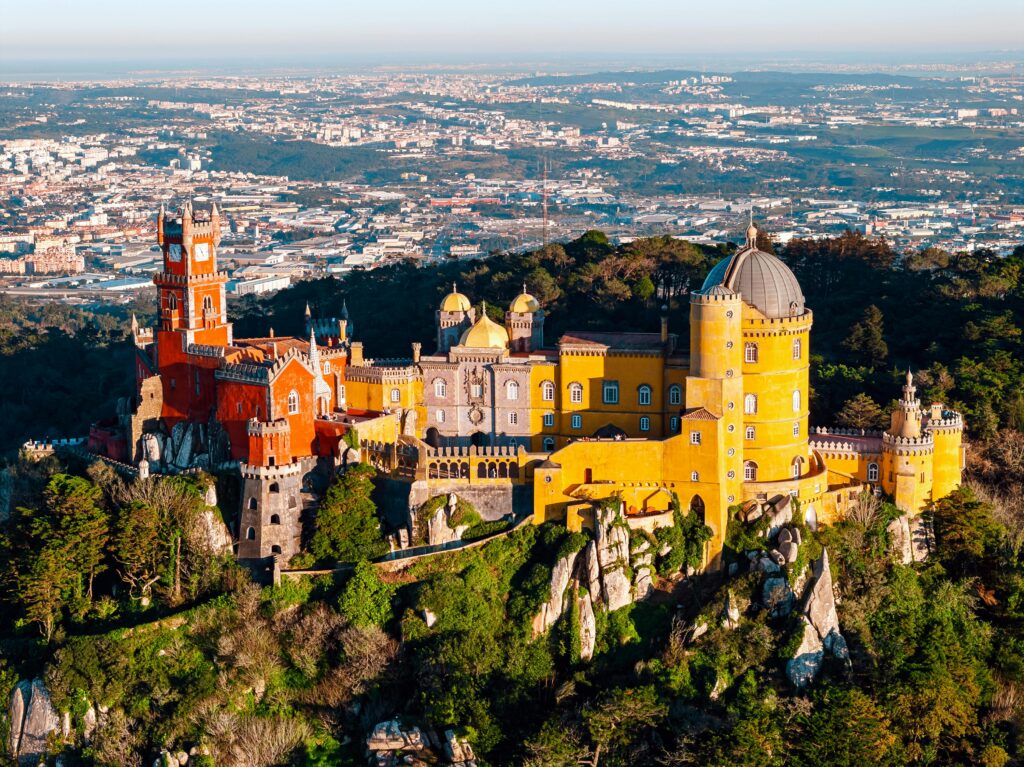
- Location: Sintra
- Period of Use: 19th century
- Why It Was Important: Commissioned by King Ferdinand II in the 19th century, Palácio da Pena is one of the finest examples of Romanticist architecture in Europe. Built on the ruins of a 16th-century monastery, the palace’s vivid colors and eclectic design reflect the artistic tastes of the time. It was used as a royal retreat until the monarchy was abolished in 1910.
- Must-See: The vibrant exterior, the opulent interiors with original furnishings, and the surrounding park featuring hidden paths and exotic plants.
- Visitor Tips: Buy tickets in advance and visit early to avoid crowds. Wear comfortable shoes as the paths can be steep.
- Website
- Tickets can be bought here
8. Palácio de Belém – The Last Royal Residence, Now the Presidential Palace
- Location: Lisbon
- Period of Use: 19th–20th century
- Why It Was Important: Serving as a royal residence from the 19th century, Palácio de Belém was where King Carlos I and his son, Crown Prince Luís Filipe, departed from before their assassination in 1908. After the fall of the monarchy in 1910, the palace was repurposed as the official residence of the President of Portugal, a role it still holds today.
- Must-See: The pink façade, the beautiful gardens, and the National Coach Museum located nearby, showcasing Portugal’s royal carriages.
- Visitor Tips: The palace is only open to visitors on select days. Check in advance and consider visiting the nearby Jerónimos Monastery afterward.
Conclusion
Portugal’s royal castles and palaces are much more than architectural marvels—they are symbols of the country’s rich and complex history. Whether you are a history enthusiast or a traveler looking to explore Portugal’s regal past, these sites offer a captivating journey through time.




